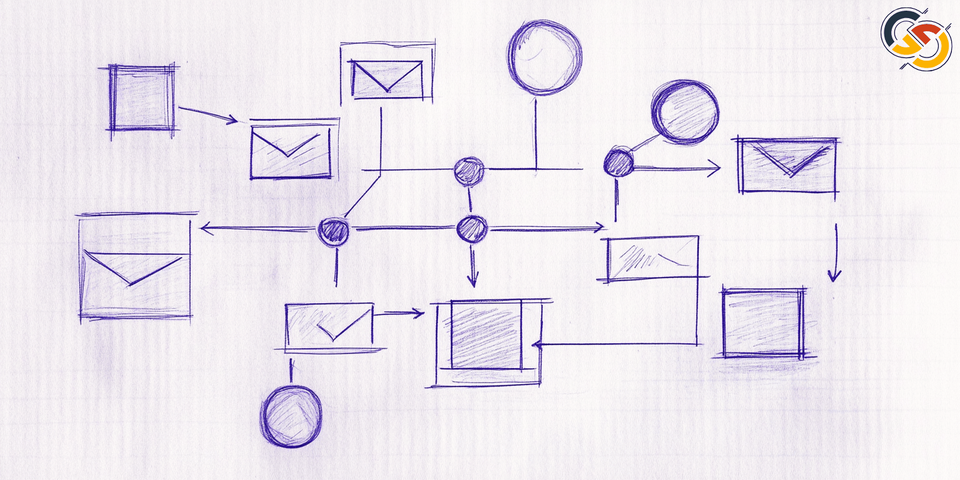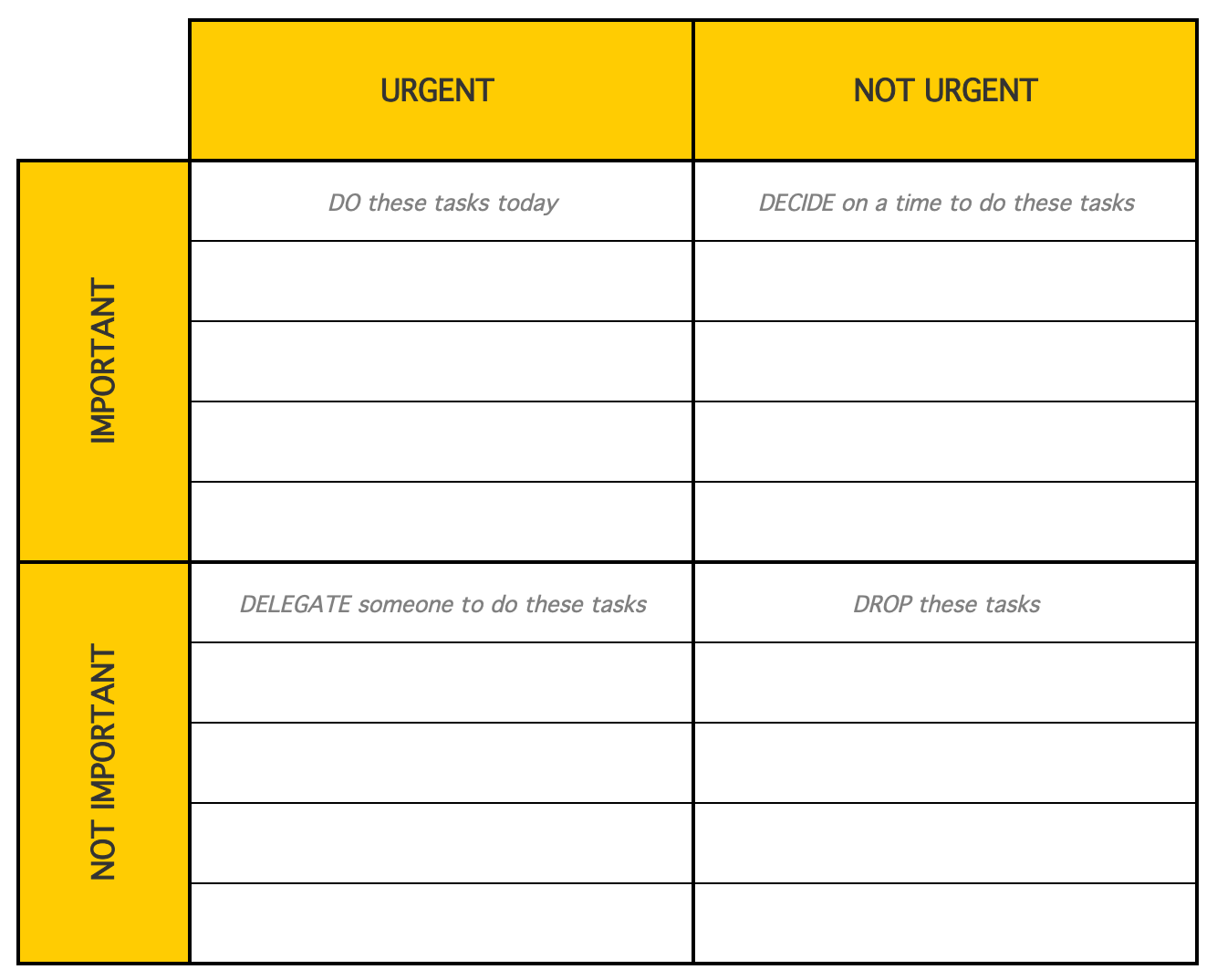The Ultimate Guide to Decision Matrix: A Powerful Tool for Making Better Choices

Introduction
Decisions are an inevitable part of our lives, both personal and professional. From choosing the right career path to selecting the best investment option, we constantly grapple with making choices that align with our goals and values. However, when faced with complex scenarios involving multiple criteria and conflicting data, making the right decision can be daunting.
That's where decision matrices come into play. These powerful tools serve as visual aids to simplify and structure decision-making. They provide a systematic approach to evaluating and comparing different options, allowing you to make informed choices based on objective data and analysis.
This comprehensive guide is your ultimate companion in understanding and utilizing decision matrices. We'll delve into the fundamental concepts, explore various decision matrices, and uncover the step-by-step process of creating and applying them to your decision-making challenges. Additionally, you'll discover advanced applications and best practices to maximize the effectiveness of decision matrices in various contexts, whether you're a business leader, project manager, or an individual seeking to make more informed choices.
What is a Decision Matrix?
A decision matrix, or a Pugh matrix or criteria-based matrix, is a systematic decision-making tool that helps evaluate and compare multiple options based on specific criteria. This analytical method lets users weigh different factors and make objective decisions by reducing complex choices to a quantifiable format.
Core Components of a Decision Matrix
- Options or Alternatives
- The different choices available for consideration
- Listed along one axis of the matrix (typically rows)
- Should be mutually exclusive options
- Criteria or Factors
- The characteristics used to evaluate each option
- Listed along the other axis (typically columns)
- Should be relevant to the decision at hand
- Weights
- Numerical values assigned to each criterion
- Reflect on the relative importance of each factor
- Usually expressed as percentages or decimals
- Scores
- Ratings are given to each option for each criterion
- Often uses a standardized scale (e.g., 1-5 or 1-10)
- Based on objective data or expert judgment

Types of Decision Matrices
1. Simple Decision Matrix:
The Simple Decision Matrix is a powerful tool for making quick and informed decisions when faced with multiple options. It offers a structured approach to evaluate and compare different choices based on relevant criteria. The key steps involved in using the Simple Decision Matrix are as follows:
- Define the Decision: Clearly articulate the decision that needs to be made. This will help focus the evaluation process and consider all relevant factors.
- Identify Options: List all the options or courses of action available to address the decision. It's important to be comprehensive and consider all viable alternatives.
- Establish Criteria: Determine the key criteria for evaluating the options. These criteria should be specific, measurable, and relevant to the decision. Common criteria include cost, feasibility, risk, potential impact, and alignment with organizational goals.
- Assign Weight (Optional): In the Simple Decision Matrix, assigning weights to the criteria is unnecessary. However, if certain criteria are deemed more important than others, weights can be assigned to reflect their relative significance. This step is optional and may be useful in situations where some factors carry more influence in the decision-making process.
- Evaluate Options: Evaluate each option against the established criteria. This can be done by assigning scores or ratings to each option for each criterion. The scores should reflect the extent to which the option meets or exceeds the desired criteria.
- Create the Matrix: Construct a matrix with the options listed along one axis and the criteria along the other. Fill the matrix with the scores or ratings assigned during the evaluation step. The resulting matrix provides a clear visual representation of each option's strengths and weaknesses.
- Analyze and Decide: Analyze the matrix carefully to identify the option that best aligns with the criteria and the overall decision objectives. Consider the pros and cons of each option, taking into account the relative importance of the criteria. Based on this analysis, decide and select the most suitable option.
The Simple Decision Matrix is a versatile tool that can be applied in various contexts, such as personal decision-making, business planning, project selection, and resource allocation. Its simplicity and ease of use make it a valuable tool for individuals and teams seeking quick and effective decisions.
2. Weighted Decision Matrix:
The Weighted Decision Matrix (WDM) is a sophisticated decision-making tool that extends the functionality of the Simple Decision Matrix. Unlike the latter, which treats all criteria equally, the WDM allows decision-makers to incorporate the relative importance of each criterion into their analysis. This feature is crucial in complex decision-making scenarios where certain factors hold more sway than others.
Constructing a WDM begins with identifying the relevant criteria that influence the decision. Once these criteria are established, the decision-maker assigns a weight to each criterion. These weights reflect the level of importance or priority that the decision-maker attaches to each criterion. The weights can be assigned using various methods, such as pairwise comparison, ranking, or assigning numerical values.
After the weights have been assigned, the decision-maker evaluates each alternative option against each criterion. Evaluation can involve assigning scores, ratings, or qualitative assessments to each option. The scores or ratings are then multiplied by the corresponding criterion weights to obtain weighted scores.
The weighted scores for each alternative are then summed up to arrive at a final score. The alternative with the highest final score is considered the most desirable option. This approach ensures that the decision-maker's preferences and values are reflected in the outcome.
The WDM is valuable for making informed and strategic decisions in complex situations. By incorporating criterion weights, the WDM helps decision-makers prioritize their objectives and make choices that align with their long-term goals and priorities.
Here are some additional benefits of using the Weighted Decision Matrix:
- It provides a systematic approach to evaluating multiple criteria and alternatives.
- It enables decision-makers to handle complex decisions with many factors involved.
- It facilitates the involvement of multiple stakeholders, each with their own perspectives and priorities.
- It enhances transparency and accountability in the decision-making process.
- It minimizes the influence of biases and emotions on the final decision.
3. Eisenhower Decision Matrix:

The Eisenhower Decision Matrix is a valuable tool for prioritizing tasks and making informed decisions about allocating time and resources effectively. It is named after former U.S. President Dwight D. Eisenhower, known for his exceptional time management skills.
The matrix divides tasks into four quadrants based on two key factors: urgency and importance. Urgent and important tasks require immediate attention and should be prioritized. These tasks often involve time-sensitive matters that have significant consequences if not addressed promptly. For example, a medical emergency or a critical deadline would fall into this quadrant.
Important but not urgent tasks are also crucial but can be scheduled for later. These tasks are often strategic or long-term, so assessing whether they truly contribute to your overall goals and objectives is essential. Although they may not require immediate action, it is essential to ensure they are not neglected and that they are eventually completed. Examples of important but not urgent tasks include planning for future projects, developing new skills, or networking.
Urgent but unimportant tasks may be time-sensitive, but they are not critical and can often be delegated or postponed. These tasks may involve responding to emails, attending meetings, or handling administrative duties. While these tasks may seem pressing, assessing whether they truly contribute to your goals and objectives is essential.
Finally, tasks that are neither urgent nor important can be eliminated or scheduled later. These tasks often include distractions, time wasters, or activities that do not align with your priorities. It is important to be ruthless in eliminating these tasks to free up time and mental energy for the tasks that truly matter.
The Eisenhower Decision Matrix helps decision-makers visualize their tasks and determine which ones to prioritize. By focusing on the tasks in the urgent and important quadrant, individuals and teams can ensure they are working on the most critical and time-sensitive matters. This approach helps them achieve their goals efficiently and effectively, reducing stress and overwhelm.
4. Engineering Decision Matrix:
The Engineering Decision Matrix (EDM) is a structured tool used in engineering and product development to evaluate and compare multiple design alternatives against technical specifications and requirements. It is beneficial when faced with various design options, enabling engineers to make informed decisions based on objective criteria.
The EDM process begins by identifying the relevant criteria or attributes that will be used to evaluate the design alternatives. These criteria may include performance, cost, manufacturability, reliability, maintainability, environmental impact, and other relevant considerations. Once the requirements have been identified, they are typically assigned weights or importance factors to reflect their relative significance in the decision-making process.
The next step is to gather data and information on each design alternative concerning the established criteria. This can involve conducting experiments, simulations, cost analyses, and other forms of technical evaluation. The collected data is then entered into the EDM matrix.
The EDM matrix typically consists of a grid with the design alternatives listed as rows and the evaluation criteria as columns. The matrix cells contain each design alternative's performance or attribute values for each criterion. These values can be quantitative (e.g., cost, weight, or efficiency) or qualitative (e.g., ease of use, aesthetics, or environmental friendliness).
To calculate the overall score for each design alternative, the performance values are multiplied by their respective weights and summed across all criteria. The design alternative with the highest overall score is generally considered the most suitable option.
The EDM approach provides a structured, transparent framework for evaluating and comparing design alternatives. It enables engineers to systematically analyze each option's strengths and weaknesses and make decisions based on objective data rather than subjective preferences.
Additionally, the EDM can identify potential trade-offs between different criteria. For example, a design alternative may offer superior performance but at a higher cost. The EDM allows engineers to assess the relative importance of these trade-offs and make informed decisions accordingly.
It's important to note that the EDM is a tool, and its effectiveness depends on the quality of the input data and the judgment of the engineers using it. The EDM should use other decision-making tools and techniques, such as risk and sensitivity analysis, to ensure a comprehensive and robust decision-making process.

Creating a Decision Matrix: Step-by-Step Guide
Step 1: Define the Decision Context
- Clearly state the problem or decision to be made
- Identify the goal or desired outcome
- Set boundaries and constraints
- Determine stakeholders involved
Step 2: Generate Options
- List all viable alternatives
- Ensure options are distinct and feasible
- Remove inferior choices
- Keep the number manageable (typically 3-7 options)
Step 3: Establish Criteria
- Identify relevant factors for evaluation
- Ensure criteria are:
- Measurable
- Independent
- Comprehensive
- Non-redundant
Step 4: Assign Weights (for weighted matrix)
- Determine the relative importance of each criterion
- Use a consistent scale (e.g., 1-10 or percentages)
- Ensure weights sum to 100% or 1.0
- Consider using paired comparison for complex weighting
Step 5: Score Options
- Evaluate each option against each criterion
- Use a consistent rating scale
- Document assumptions and rationale
- Gather data or expert opinions as needed
Step 6: Calculate Results
- Multiply scores by weights (if applicable)
- Sum up the total scores for each option
- Rank alternatives based on final scores
- Perform sensitivity analysis
Advanced Applications and Techniques
Sensitivity Analysis
- Evaluate the impact of varying input parameters on the final rankings. This can be done by adjusting the weights of different criteria and observing how the rankings change.
- Identify critical criteria that significantly impact the rankings. These criteria should receive more attention during the decision-making process.
- Conduct multiple sensitivity analyses to assess the robustness of the results. This will help ensure that the rankings are not overly sensitive to small changes in the input parameters.
- Consider multiple scenarios, each with different assumptions about the future. This will help to identify potential risks and opportunities that could affect the decision-making process.
Group Decision Making
- Aggregate individual matrices from multiple decision-makers to create a consensus matrix. This can be done using various methods, such as the Borda count or the pairwise comparison.
- Use consensus-building techniques to facilitate agreement among decision-makers. This may involve open discussion, negotiation, or voting.
- Address conflicting perspectives by identifying the underlying assumptions and values driving them. Once these assumptions and values have been identified, strategies for resolving the conflicts can be developed.
- Document the decision rationale clearly and concisely. This will help ensure that the decision-making process is transparent and auditable.
Integration with Other Tools
- SWOT Analysis: Identify the strengths, weaknesses, opportunities, and threats associated with each decision alternative. This information can then be used to inform the decision-making process.
- Risk Assessment: Identify and assess the risks associated with each decision alternative. This information can then be used to develop strategies for mitigating the risks.
- Cost-Benefit Analysis: Estimate the costs and benefits of each decision alternative. Then, use this information to determine the net benefit of each alternative.
- Value Stream Mapping: Identify and analyze the steps involved in each decision alternative. This information can then be used to identify opportunities for improvement.

Best Practices for Using Decision Matrices
1. Data Quality and Objectivity
- Use reliable data sources
- Document assumptions
- Maintain consistency in scoring
- Avoid bias in evaluations
2. Stakeholder Involvement
- Include relevant perspectives
- Gather diverse expertise
- Build consensus on criteria
- Communication throughout process
3. Documentation
- Record decision context
- Document methodology
- Maintain audit trail
- Archive results and rationale
4. Regular Review
- Update as new information arrives
- Reassess weights periodically
- Learn from outcomes
- Refine process continuously
Common Pitfalls and How to Avoid Them
1. Over-complication
- Keep it as simple as possible
- Focus on essential criteria
- Limit the number of options
- Use the appropriate level of detail
2. Subjective Bias
- Use objective measures when possible
- Gather multiple perspectives
- Document assumptions
- Challenge personal preferences
3. Inconsistent Scoring
- Establish clear rating scales
- Define criteria precisely
- Use reference points
- Maintain scoring guidelines
4. Ignoring Uncertainty
- Consider risk factors
- Use ranges where appropriate
- Perform sensitivity analysis
- Document uncertainties
Real-World Applications
Business Decision Making
- Vendor selection
- Product development
- Investment choices
- Strategic planning
Project Management
- Project prioritization
- Resource allocation
- Risk assessment
- Technology selection
Personal Decision Making
- Career choices
- Purchase decisions
- Location selection
- Time management
Digital Tools and Templates
Spreadsheet Templates
- Microsoft Excel templates offer various customizable options, allowing users to create and manage spreadsheets for various purposes, such as budgeting, financial tracking, inventory management, etc.
- Google Sheets solutions: Google Sheets provides a cloud-based alternative to Excel, enabling seamless collaboration and real-time data sharing among team members.
- Built-in calculators: Many spreadsheet programs include built-in calculators that allow users to perform basic mathematical operations and complex calculations directly within their spreadsheets.
- Customizable formats: Spreadsheets allow users to adjust font styles, colors, and formatting to suit individual preferences and enhance readability.
Specialized Software for Decision Matrix Implementation
Decision Support Systems (DSS)
- Expert Choice
- Website: www.expertchoice.com
- Key Features:
- Advanced decision modeling capabilities
- Group decision support
- Analytical Hierarchy Process (AHP) integration
- Real-time sensitivity analysis
- Cloud-based collaboration
- SuperDecisions
- Website: www.superdecisions.com
- Key Features:
- Free for academic use
- Network modeling capabilities
- Comprehensive documentation
- Advanced hierarchy creation
- Export functionality
- D-Sight
- Website: www.d-sight.com
- Key Features:
- Multi-criteria decision analysis
- Portfolio optimization
- Interactive visualizations
- Scenario analysis
- Collaborative decision-making
Project Management Tools
- Microsoft Project
- Website: www.microsoft.com/project
- Key Features:
- Comprehensive project planning
- Resource management
- Timeline visualization
- Integration with Office 365
- Advanced reporting capabilities
- Jira
- Website: www.atlassian.com/jira
- Key Features:
- Agile project management
- Customizable workflows
- Time tracking
- Bug tracking
- Extensive integration options
- Asana
- Website: www.asana.com
- Key Features:
- Intuitive interface
- Task management
- Team collaboration
- Timeline views
- Custom templates
- Monday.com
- Website: www.monday.com
- Key Features:
- Visual project tracking
- Customizable boards
- Automation capabilities
- Time management
- Multiple view options
Risk Analysis Software
- @RISK
- Website: www.palisade.com/risk
- Key Features:
- Monte Carlo simulation
- Sensitivity analysis
- Distribution fitting
- Integration with Excel
- Risk modeling templates
- Crystal Ball
- Website: www.oracle.com/crystalball
- Key Features:
- Predictive modeling
- Optimization analysis
- Historical data analysis
- Excel integration
- Comprehensive reporting
- RiskWatch
- Website: www.riskwatch.com
- Key Features:
- Risk assessment
- Compliance management
- Security analysis
- Custom reporting
- Industry-specific solutions
Collaboration Platforms
- Microsoft Teams
- Website: www.microsoft.com/teams
- Key Features:
- Video conferencing
- Document sharing
- Chat functionality
- Integration with Office 365
- Custom channels
- Slack
- Website: www.slack.com
- Key Features:
- Real-time messaging
- Channel organization
- File sharing
- App integration
- Search functionality
- Confluence
- Website: www.atlassian.com/confluence
- Key Features:
- Document collaboration
- Knowledge management
- Team spaces
- Version control
- Templates
Decision Matrix-Specific Tools
- Priority Matrix
- Website: www.priority.com
- Key Features:
- Eisenhower matrix implementation
- Task prioritization
- Team collaboration
- Mobile access
- Progress tracking
- DecisionTools Suite
- Website: www.palisade.com/decisiontools
- Key Features:
- Comprehensive decision analysis
- Risk modeling
- Statistical analysis
- Optimization tools
- Excel integration
Free and Open-Source Options
- OpenProject
- Website: www.openproject.org
- Key Features:
- Project management
- Team collaboration
- Gantt charts
- Time tracking
- Wiki functionality
- R Statistical Software
- Website: www.r-project.org
- Key Features:
- Statistical analysis
- Decision modeling
- Data visualization
- Custom programming
- Large community support
Implementation Tips
- Tool Selection Criteria
- Budget considerations
- Team size and needs
- Technical requirements
- Integration capabilities
- Learning curve
- Getting Started
- Start with free trials
- Test with small projects
- Gather team feedback
- Evaluate support resources
- Consider scalability
- Best Practices
- Regular training sessions
- Documentation maintenance
- Backup procedures
- Update protocols
- Security measures
Cost Considerations
- Pricing Models
- Subscription-based
- Per-user licensing
- Enterprise agreements
- Free/freemium options
- Volume discounts
- Hidden Costs
- Training requirements
- Implementation support
- Customization needs
- Maintenance fees
- Upgrade costs
Security and Compliance
- Data Protection
- Encryption standards
- Access controls
- Backup systems
- Compliance certifications
- Privacy features
- Industry Standards
- ISO certifications
- GDPR Compliance
- HIPAA compliance
- SOC 2 certification
- Industry-specific requirements

Future Trends and Innovations
- AI Integration: Artificial intelligence (AI) will continue to play a major role in shaping the future of business. AI-powered tools and technologies are already being used to automate tasks, improve decision-making, and create new growth opportunities. In the coming years, we can expect to see even more AI integration in the workplace, with a focus on the following areas:
- Automated data collection: AI-powered tools can automatically collect and analyze data from various sources, such as social media, customer surveys, and financial transactions. This data can improve decision-making, identify trends, and develop new products and services.
- Pattern recognition: AI algorithms can identify patterns and anomalies in data. This information can be used to detect fraud, identify potential risks, and develop targeted marketing campaigns.
- Decision optimization: AI can help businesses make better decisions by analyzing large amounts of data and identifying the best action. This can lead to improved efficiency, reduced costs, and increased profits.
- Real-time updates: AI-powered tools can provide real-time updates on business performance, customer behavior, and market trends. This information can be used to make quick decisions and adjust strategies as needed.
- Mobile Applications: Mobile applications will continue to be an important part of our lives, providing a convenient way to stay connected, access information, and conduct business. In the coming years, we can expect to see even more mobile applications developed, with a focus on the following areas:
- On-the-go decision-making: Mobile applications can make quick decisions while on the go. For example, a business owner can use a mobile application to track inventory levels, approve purchase orders, and manage customer relationships.
- Cloud synchronization: Mobile applications can be synchronized with cloud-based platforms, providing users access to their data from any device. This makes it easy to stay productive and collaborate with others, even when you're not in the office.
- Collaborative features: Mobile applications can collaborate with others in real time. For example, a team of employees can use a mobile application to share ideas, brainstorm solutions, and track project progress.
- Interactive interfaces: Mobile applications can be designed with interfaces that make it easy for users to interact with data. For example, a mobile application can use gestures, voice commands, and augmented reality to provide users with a more immersive and engaging experience.
Measuring Success: Key Performance Indicators
Decision Quality:
- Accuracy of decisions made.
- Timeliness of decisions made.
- Alignment of decisions with strategic goals.
- Consistency of decisions across different decision-makers.
- Level of stakeholder involvement in decision-making.
Implementation Success:
- Effectiveness of implementation plans.
- Efficiency of implementation processes.
- Timely completion of implementation projects.
- Level of stakeholder satisfaction with implementation.
- Achievement of desired outcomes from implementation.
Stakeholder Satisfaction:
- Level of satisfaction of key stakeholders with the organization's performance.
- Identification and management of stakeholder expectations.
- Proactive communication with stakeholders.
- Regular stakeholder engagement activities.
- Resolution of stakeholder concerns and complaints.
Process Efficiency:
- Streamlining of processes to eliminate waste and redundancy.
- Standardization of processes to ensure consistency and quality.
- Automation of processes to improve speed and accuracy.
- Continuous monitoring and improvement of processes.
- Use of technology to enhance process efficiency.
Continuous Improvement:
Feedback Collection:
- Regular collection of feedback from stakeholders, customers, and employees.
- Use surveys, interviews, focus groups, and other methods to gather feedback.
- Analysis of feedback to identify areas for improvement.
Process Refinement:
- Identification of process bottlenecks and inefficiencies.
- Development and implementation of process improvement initiatives.
- Testing and evaluation of process improvements.
- Ongoing monitoring of process performance.
Knowledge Sharing:
- Creation of a culture of knowledge sharing within the organization.
- Establishment of mechanisms for sharing best practices and lessons learned.
- Encouragement of cross-functional collaboration and teamwork.
- Use of technology to facilitate knowledge sharing.
Best Practice Development:
- Identification and documentation of best practices in various areas of the organization.
- Dissemination of best practices throughout the organization.
- Recognition and reward of employees who contribute to best practice development.
- Continuous improvement of best practices based on feedback and experience.
Conclusion:
A decision matrix is invaluable for decision-makers seeking to improve their decision-making process and achieve better outcomes. This systematic approach allows individuals and teams to evaluate various options and make informed choices based on predefined criteria.
By following the guidelines and best practices outlined in this guide, you can leverage the full potential of a decision matrix. Here's how:
- Clearly Define the Decision:
- Articulate the specific decision you need to make and the context surrounding it.
- Ensure all stakeholders clearly understand the problem and the desired outcome.
- Identify Relevant Criteria:
- Brainstorm and identify all relevant criteria that are important for evaluating the options.
- Consider cost, feasibility, impact, and alignment with organizational goals.
- Assign Weights to Criteria:
- Assign weights to each criterion to reflect its relative importance in decision-making.
- This step allows you to prioritize criteria and focus on those that have the greatest impact.
- Evaluate Options Against Criteria:
- For each option, systematically assess how well it meets each criterion.
- Use a consistent rating scale to ensure objectivity and comparability.
- Calculate Weighted Scores:
- Multiply the rating for each option by the weight of the corresponding criterion.
- Sum these products for each option to arrive at a weighted score.
- Analyze and Interpret Results:
- Compare the weighted scores of the different options to identify the most promising one.
- Explore potential trade-offs and consider any qualitative factors that may influence the decision.
- Make an Informed Decision:
- Make an informed decision based on the results of the decision matrix and other relevant information.
- Document the rationale behind your choice and communicate it to stakeholders.
- Monitor and Evaluate:
- Implement the chosen option and monitor its progress over time.
- Evaluate the effectiveness of your decision and learn from the experience.
Remember, a decision matrix is not a substitute for careful deliberation and judgment. It is a tool to assist you in making better decisions by providing a structured framework for evaluating options and considering various factors.
Frequently Asked Questions (FAQs)
- What is a decision matrix, and how does it work? A decision matrix is a systematic tool for evaluating multiple options against various criteria to make informed decisions. It scores each option against predetermined criteria and calculates overall ratings.
- When should I use a decision matrix? Use a decision matrix when facing complex decisions with multiple options and criteria, especially in situations requiring objective comparison and documentation of the decision-making process.
- What's the difference between a simple and weighted decision matrix? A simple decision matrix treats all criteria equally, while a weighted decision matrix assigns numerical weights to each criterion, thereby varying the importance of each criterion.
- How many criteria should I include in a decision matrix? While there's no strict limit, it is generally recommended that 4-8 criteria be used to maintain manageability while ensuring comprehensive evaluation.
- Can decision matrices be used for group decision-making? Decision matrices are excellent tools for group decision-making. They provide a structured framework for combining multiple perspectives and reaching consensus.
- How do I determine the weights for different criteria? Weights can be determined through group discussion, expert opinion, or systematic methods like paired comparison. They should reflect the relative importance of each criterion to the overall decision.
- What are common mistakes to avoid when using a decision matrix? Common mistakes include over-complicating the matrix, using too many criteria, inconsistent scoring, and failing to document assumptions and rationale.
- Is there software available to create decision matrices? Various tools are available, from simple spreadsheet templates to specialized decision support software with advanced features and collaboration capabilities.
- How often should I review and update a decision matrix? Review your decision matrix whenever new information becomes available or circumstances change significantly. Regular reviews ensure the tool remains relevant and practical.
- Can decision matrices be used for personal decisions? Absolutely! While decision matrices are often used in business contexts, they can also be valuable for personal choices like choosing a career, buying a home, or selecting educational programs.







